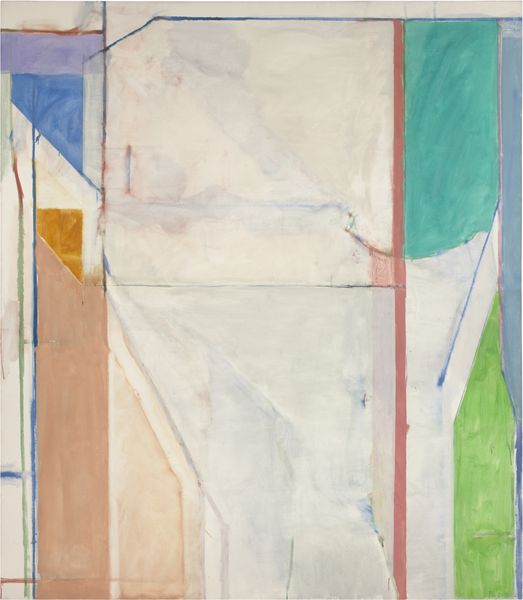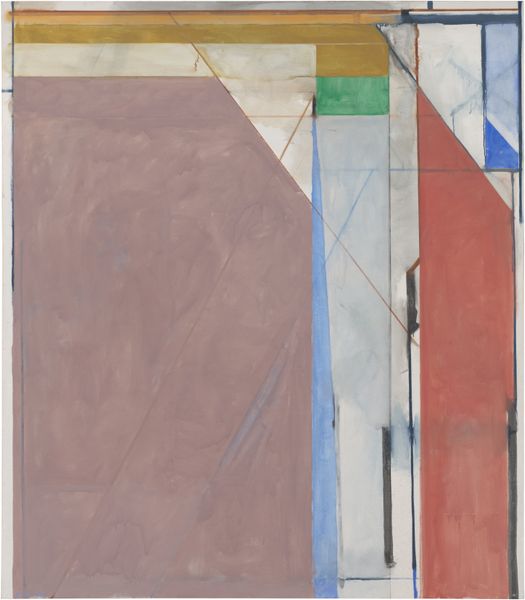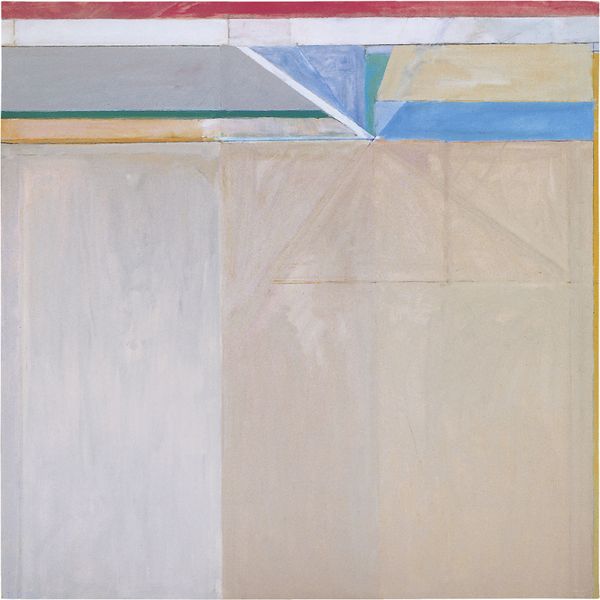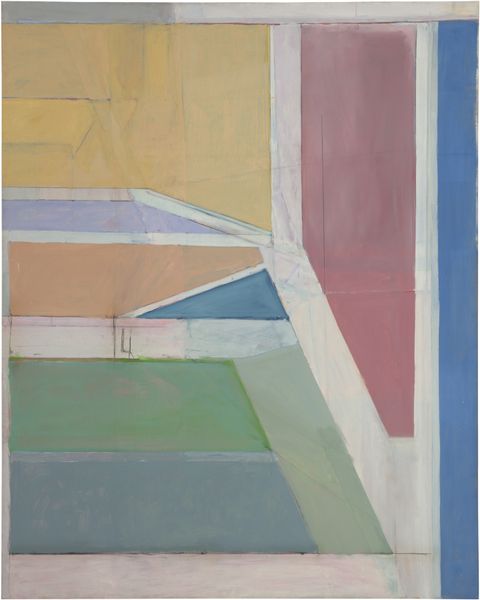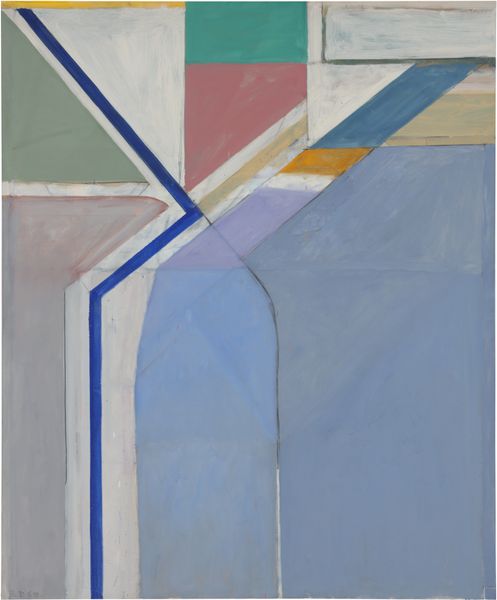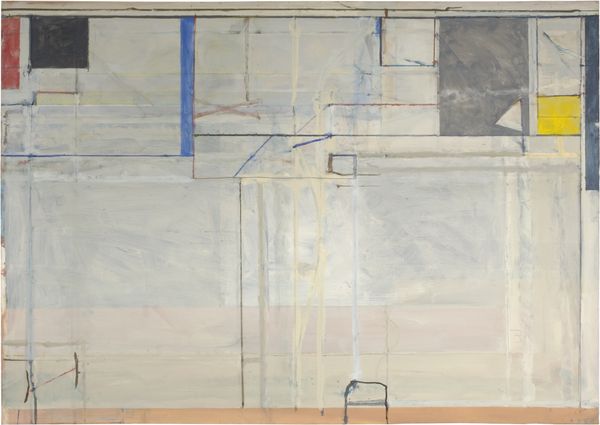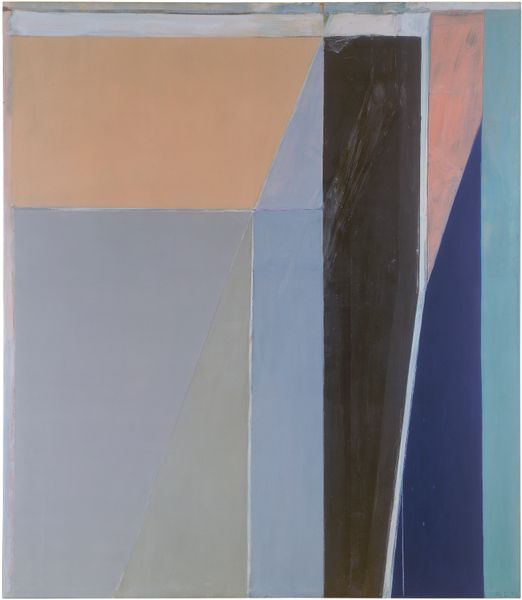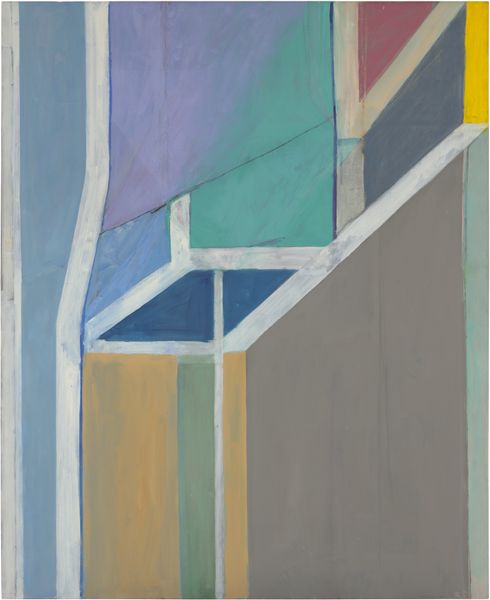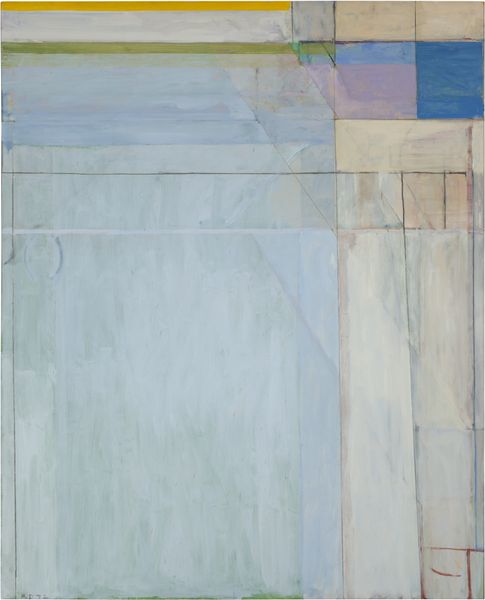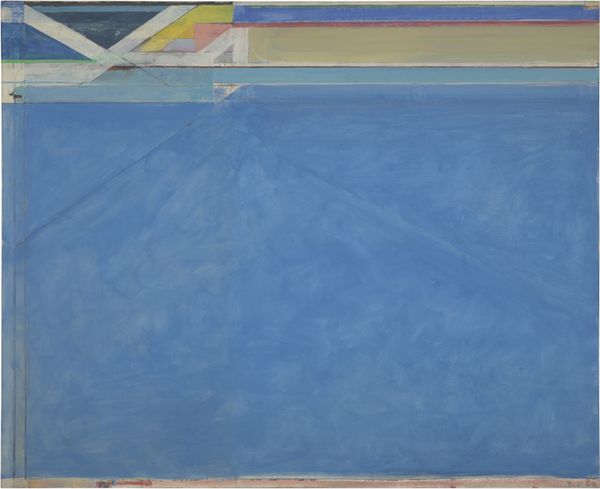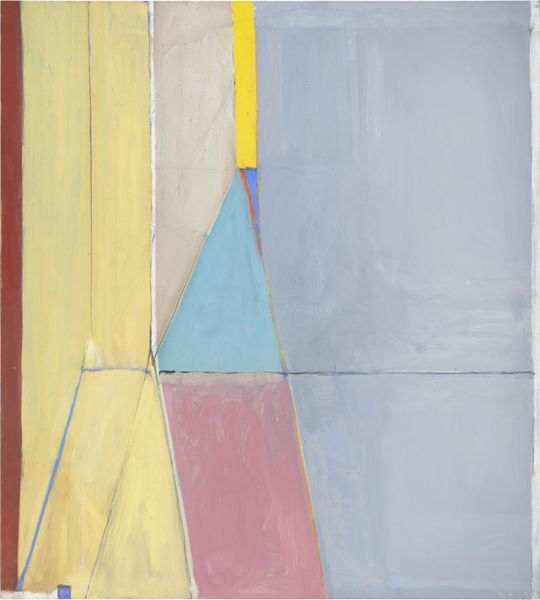
painting, oil-paint, acrylic-paint
#
painting
#
oil-paint
#
acrylic-paint
#
oil painting
#
bay-area-figurative-movement
#
acrylic on canvas
#
geometric-abstraction
#
abstraction
#
line
#
modernism
#
hard-edge-painting
Dimensions: 205.7 x 205.7 cm
Copyright: Richard Diebenkorn Foundation
Curator: Richard Diebenkorn's "Ocean Park #63," created in 1973. It's oil and acrylic on canvas. The work is an evocative example of Hard-Edge painting from the mid-20th century. What’s your initial take? Editor: It feels remarkably calm. The muted palette, predominantly off-whites and pastels, gives it an airy, almost ethereal quality. It's a painting about light as much as it is about form, wouldn't you agree? Curator: Precisely. Diebenkorn began his Ocean Park series in 1967, after moving to that district of Santa Monica, California. Many see this turn as reflective of the broader shift towards formalism and away from the perceived angst of Abstract Expressionism that dominated earlier decades. Editor: Note how he organizes space with those interlocking geometric shapes. The lines create these subtle divisions. And that contrast—sharp lines alongside blurred edges and visible brushstrokes. This creates a visual tension; a push and pull that keeps the eye engaged. Curator: It’s hard not to consider his earlier abstract expressionist phase. But what’s telling is the grid-like structure, so dominant here. This suggests Diebenkorn's preoccupation with spatial organization, and even a kind of mapping, echoing urban planning aesthetics of the time. Think about the growth of Los Angeles and its planned expansion. Editor: While I appreciate the social reading of "Ocean Park #63", the pure visuality of this artwork moves me most. See that translucent quality—the layering of paint allows the colors beneath to peek through, adding depth and luminosity. It almost dematerializes the surface. Curator: His shift away from gestural abstraction toward more defined geometric structures coincides with broader societal shifts in California’s cultural landscape. Editor: Looking at it from this point of view I notice a synthesis: he isn’t discarding his prior work so much as refining and redirecting the energetic spirit of abstract expressionism through a new language. It's not merely geometric for geometry's sake. Curator: A valuable reminder of the artist’s complex dialogue with place and movement. Editor: Indeed. “Ocean Park #63” resonates deeply when considering how the personal experience of the artist melds with their socio-historical landscape.
Comments
No comments
Be the first to comment and join the conversation on the ultimate creative platform.
